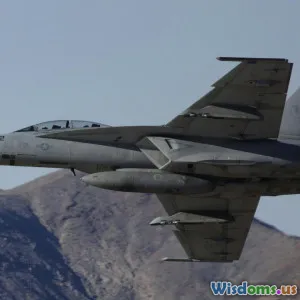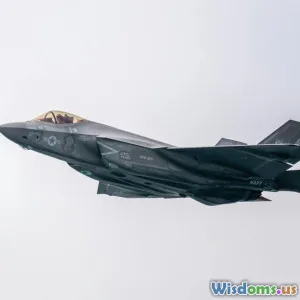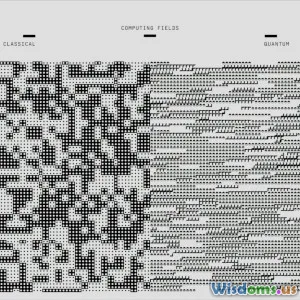
Why Stealth Technology Is Losing Its Edge in Modern Conflicts
8 min read Explore why stealth technology is losing its edge in modern warfare and what emerging tech is reshaping the battlefield. (0 Reviews)
Why Stealth Technology Is Losing Its Edge in Modern Conflicts
The era when stealth technology was the cutting-edge solution for dominance on the battlefield seems to be waning. For decades, the promise of rendering fighters, drones, and naval vessels nearly invisible to enemy radar confounded adversaries and reshaped air combat doctrines. However, rapid evolution in detection systems, augmented intelligence, and electronic warfare are transforming the battlefield perception. Stealth aircraft, once heralded as invincible ghosts, are gradually losing some of their edge as vulnerabilities emerge and countermeasures improve.
This article explores the factors behind this paradigm shift—why stealth is no longer the sole trump card in modern military engagements and how emerging technologies are influencing future combat.
The Rise and Early Dominance of Stealth Technology
Stealth technology gained prominence in the late 20th century, famously exemplified by the F-117 Nighthawk and B-2 Spirit bombers. Leveraging radar-absorbing materials, unique airframe designs to deflect radar waves, and heat signature management, these vehicles could infiltrate heavily defended airspace undetected.
In conflicts such as the Gulf War in 1991, stealth aircraft demonstrated their effectiveness by penetrating Iraqi air defenses and delivering precision strikes without losses. This technological marvel convinced militaries worldwide to invest millions into stealth platforms, believing that the ability to evade enemy detection would remain an enduring advantage.
The Growing Limitations of Stealth
1. Advancements in Radar and Sensor Technology
Radar systems are no longer limited to traditional frequency bands. Modern adversaries integrate low-frequency radars, bistatic/multistatic radar arrays, and passive radar systems that identify stealth aircraft by detecting disturbances in ambient electromagnetic signals or reflections off non-stealth components.
For example, China’s deployment of the JY-27A long-range VHF radar reportedly challenges stealth aircraft, as its longer wavelengths can detect the general shape and movement of stealth vehicles, albeit with less precision for targeting.
2. Sensor Fusion and Data Integration
Perhaps a more transformative challenge comes not from any single radar but from the fusion of multiple sensor types—infrared, acoustic, electromagnetic, and radar signals—combined using AI-driven algorithms. This layered detection network allows military operators to locate stealth targets by correlating weak signals where single system detection fails.
3. Evolution of Electronic Warfare (EW)
Electronic warfare has become a double-edged sword for stealth platforms. While stealth aircraft must manage their own electromagnetic emissions very carefully to avoid detection, adversaries are developing ability to passively detect signal signatures or reflect radar waves off environmental objects. Crucially, the widespread deployment of anti-stealth jamming and deceptive signal tactics force stealth technology into a reactive posture.
4. Cost and Maintenance Challenges
Beyond technological limitations, stealth platforms come with massive price tags and complex maintenance requirements. Materials degrade, coatings wear out, and signature management demands rigorous upkeep which becomes increasingly expensive over time. This costs-benefit balance is prompting militaries to reconsider pure stealth in favor of adaptable, hybrid approaches.
Real-World Examples Demonstrating Stealth’s Waning Edge
-
Syrian Conflict (2018): The downing of Israeli F-35 fighter jets entering Syria exposed limits in stealth. Russian-supplied S-300 missile systems and advanced electronic surveillance demonstrated increased capability to detect and target stealth aircraft.
-
Nagorno-Karabakh Conflict (2020): The widespread usage of drones equipped with non-stealth technologies still managed to challenge traditional air defense systems, proving that overwhelming sensor networks and swarm tactics effectively complement or bypass stealth advantages.
-
South China Sea Operations: China’s growing maritime sensor arrays and integration of space-based surveillance indicate a shift towards counter-stealth initiatives, signaling stealth naval vessels and aircraft may face greater risk.
What’s Next? Future Military Technologies Outpacing Stealth
Hypersonic Weapons
The increasing speed of hypersonic cruise and glide vehicles cuts reaction windows drastically, making stealth less relevant. Hypersonics fly too fast for current tracking and interception systems, potentially eclipsing the need for invisibility.
Artificial Intelligence (AI) and Machine Learning
AI algorithms improve target recognition of subtle signatures in dense signal environments. As autonomous systems advance, they can analyze complex sensor data faster and more accurately than human operators, detecting stealth aircraft with higher probabilities.
Quantum Radar Development
Quantum radar technology, still experimental, promises to detect objects by exploiting quantum entanglement and photon behavior, potentially penetrating stealth designs that evade conventional radars.
Multidomain Sensor Networks
The combined use of satellites, drones, ground stations, and naval platforms creates vast sensor webs that detect anomalies across multiple spectra simultaneously, reducing the impact of any single stealth attribute.
The Shift Toward Versatile Platforms
Increasingly, militaries acknowledge the limits of pure stealth and pivot towards platforms blending stealth, speed, maneuverability, and electronic warfare capabilities. The future battlefield rewards adaptability more than invisibility alone.
For instance, the U.S. Air Force’s Next Generation Air Dominance (NGAD) program focuses on a combination of manned-unmanned teaming with advanced sensors and networking, reflecting a holistic approach beyond just stealth.
Similarly, Russia and China invest in electronic warfare suites and swarm tactics supporting less stealthy but more agile systems.
Conclusion: Stealth Technology’s Waning Magic and the evolving Battlefield
Stealth technology revolutionized how militaries approached air superiority and battlefield invisibility. Yet as sensor systems grow more sophisticated in detection, fusion, and processing, the stealth bubble is deflating.
Rather than disappearing, stealth becomes one component of a more complex military ecosystem including electronic warfare, AI-driven sensor fusion, hypersonic platforms, and multispectral detection networks. Modern conflicts demonstrate the critical need for versatility, resilience, and rapid adaptation in military technologies, making reliance on stealth alone a risky gamble.
In the future, the edge may not lie in hiding from the enemy’s eyes but in out-thinking, outpacing, and outmaneuvering them with comprehensive, multidomain strategies.
Sources:
- Asia Times, "China’s new radar system challenges stealth, analysts say," 2021
- Defense News, "Downing of F-35 in Syria reveals stealth limits," 2018
- RAND Corporation, "The evolving air defense challenge," 2020
- Journal of Defense Modeling and Simulation, "Sensor fusion and future warfare," 2022
- U.S. Air Force NGAD Program updates, 2023
Rate the Post
User Reviews
Popular Posts

















